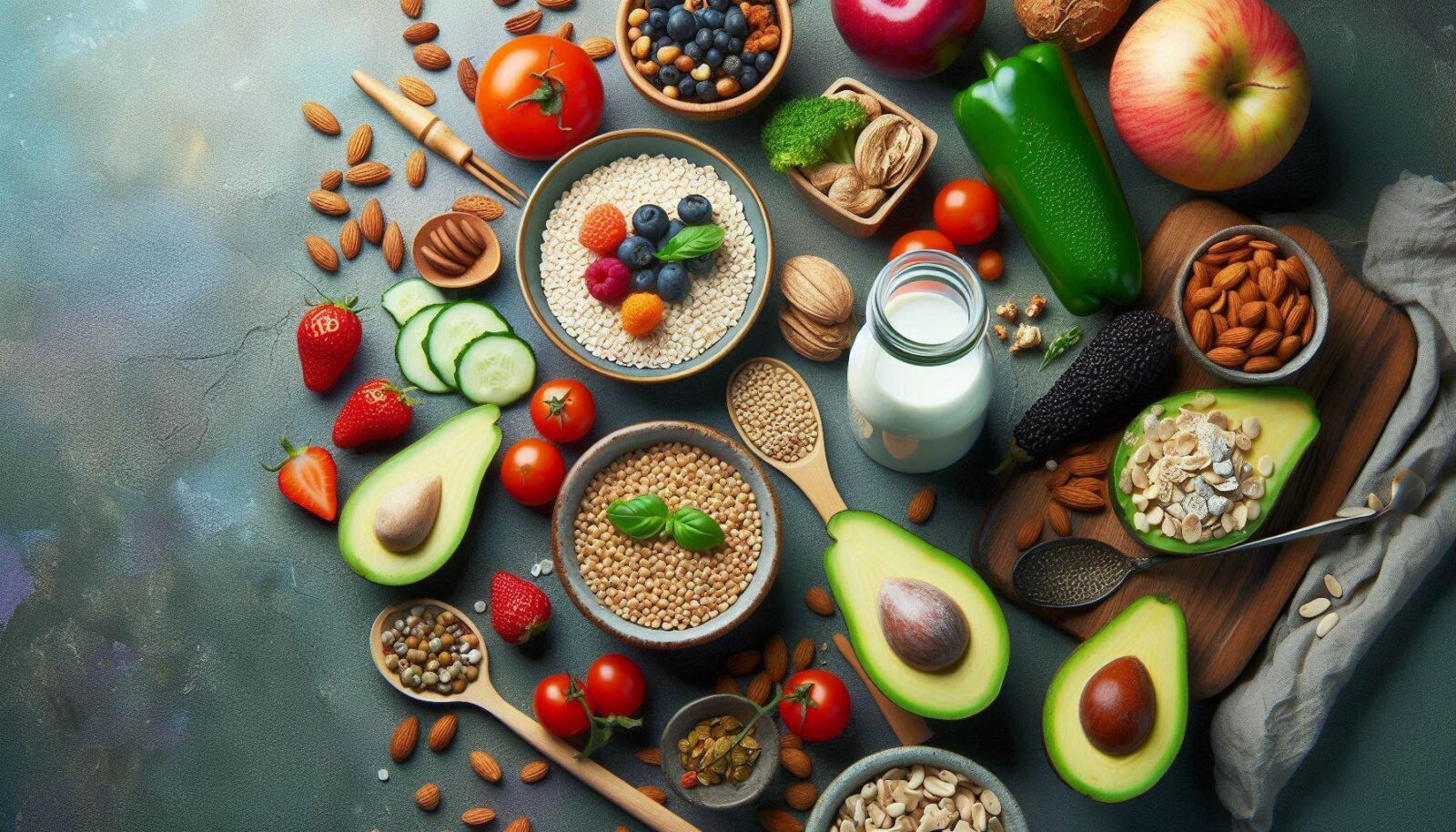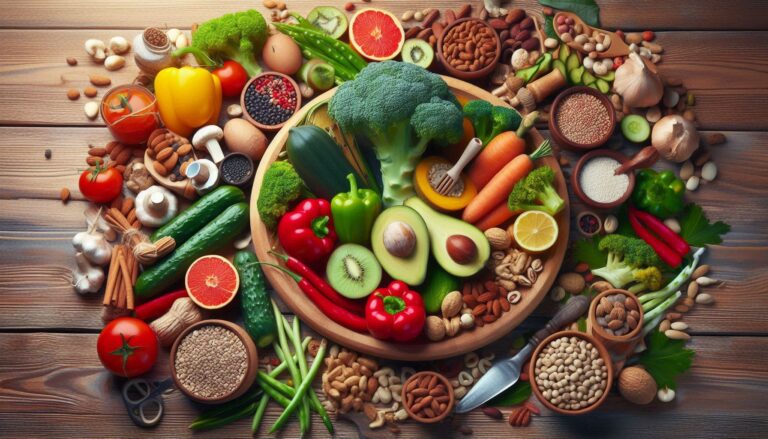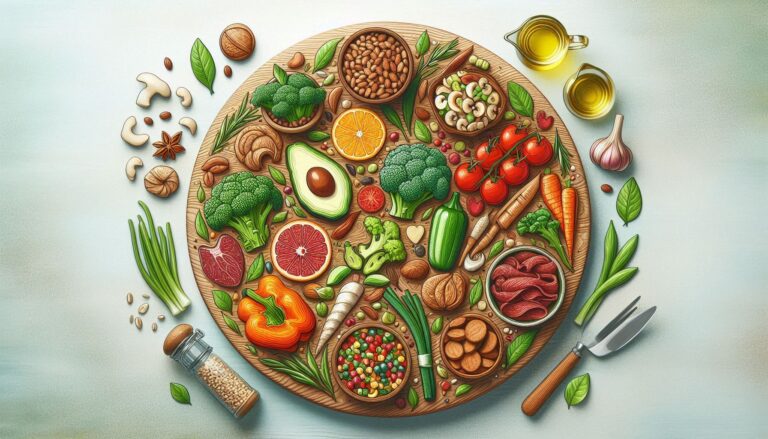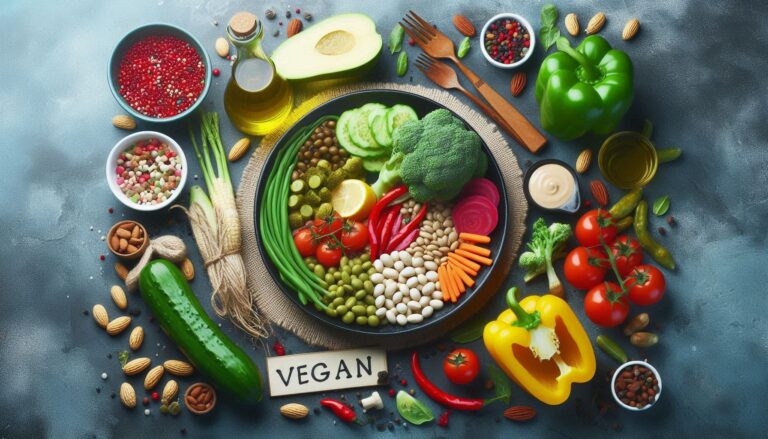Discover the benefits of a gluten-free vegan diet and learn how to navigate this lifestyle with ease. This comprehensive guide provides valuable information, tips, and resources to help you embrace a healthy and compassionate way of eating.
Introduction
In recent years, the number of people adopting a gluten-free and vegan diet has skyrocketed. This growing trend is driven by various factors, including health concerns, environmental considerations, and ethical beliefs. While the combination of gluten-free and vegan can seem challenging, it is entirely possible to embrace this lifestyle without compromising on taste or nutrition. This comprehensive article will delve into the world of gluten-free veganism, exploring the benefits, challenges, and practical tips to help you embark on this journey.
Understanding Gluten-Free and Vegan
What is Gluten? Gluten is a protein found in wheat, barley, and rye. It is a sticky substance that gives bread, pasta, and other baked goods their chewy texture. For individuals with celiac disease or gluten sensitivity, consuming gluten can cause digestive issues, fatigue, and other health problems.
Common Gluten-Containing Foods
- Bread
- Pasta
- Baked goods (cakes, cookies, pastries)
- Beer
- Sauces and gravies
- Processed foods (often containing hidden gluten)
What is Veganism? Veganism is a lifestyle that excludes the consumption of animal products, including meat, poultry, fish, eggs, dairy, and honey. It also extends to avoiding products that are derived from animals, such as leather, wool, and fur.
Common Vegan Foods
- Fruits
- Vegetables
- Whole grains
- Legumes
- Nuts
- Seeds
- Plant-based proteins (tofu, tempeh, seitan)
Benefits of a Gluten-Free Vegan Diet
Improved Digestive Health By eliminating gluten and animal products from your diet, you can alleviate digestive symptoms such as bloating, gas, and diarrhea, especially if you have celiac disease or gluten sensitivity.
Enhanced Heart Health A gluten-free vegan diet is rich in plant-based foods, which are generally low in saturated fat and cholesterol. This can help reduce your risk of heart disease, stroke, and high blood pressure.
Weight Management Many gluten-free and vegan foods are naturally low in calories and high in fiber, which can aid in weight loss or weight management.
Reduced Risk of Chronic Diseases Following a gluten-free vegan diet has been linked to a lower risk of certain chronic diseases, including type 2 diabetes, certain types of cancer, and Alzheimer’s disease.
Environmental Benefits Animal agriculture is a significant contributor to greenhouse gas emissions, deforestation, and water pollution. By adopting a gluten-free vegan diet, you can reduce your environmental impact.
Ethical Considerations Veganism is often motivated by ethical concerns about animal welfare and the treatment of animals in the food industry. By choosing a vegan lifestyle, you can contribute to a more compassionate and sustainable world.
Get The Complete Plant Based Recipe Cookbook — 200+ Vegan Recipes
Challenges of a Gluten-Free Vegan Diet
Nutritional Deficiencies While a well-planned gluten-free vegan diet can provide all the necessary nutrients, there are some key nutrients that may require careful attention, including protein, calcium, iron, vitamin B12, omega-3 fatty acids, and zinc.
Limited Food Options In some areas, finding gluten-free and vegan options can be challenging. However, with the increasing popularity of these diets, more and more options are becoming available.
Social Challenges Navigating social situations can be tricky when you’re following a gluten-free vegan diet. You may need to be prepared to explain your dietary choices and decline certain foods.
Dining Out Difficulties Eating out can be challenging for gluten-free vegans, as many restaurants may not have suitable options or may not be aware of the specific needs of this dietary lifestyle. However, with a little planning and communication, you can find gluten-free and vegan-friendly restaurants.
Essential Nutrients for Gluten-Free Vegans
- Protein: Beans, lentils, tofu, tempeh, seitan, nuts, seeds, whole grains
- Calcium: Fortified plant-based milk, leafy greens, fortified tofu
- Iron: Legumes, leafy greens, fortified cereals
- Vitamin B12: Fortified plant-based milk, nutritional yeast, supplements
- Omega-3 Fatty Acids: Flaxseeds, chia seeds, walnuts, algae-based supplements
- Zinc: Legumes, nuts, seeds, whole grains
Gluten-Free Vegan Meal Planning
Understanding Food Labels When shopping for gluten-free vegan products, it’s important to read food labels carefully. Look for products that are labeled “gluten-free” and “vegan.” Be aware of hidden sources of gluten, such as wheat starch and hydrolyzed wheat protein.
Pantry Staples Stock your pantry with gluten-free vegan staples like:
- Gluten-free flour (almond, coconut, quinoa)
- Plant-based milk (almond, soy, oat)
- Beans and lentils
- Rice, quinoa, and other whole grains
- Nuts and seeds
- Dried fruits
- Spices and herbs
Meal Ideas and Recipes
- Breakfast: Oatmeal with fruit and nuts, tofu scramble, avocado toast
- Lunch: Salad with a vegan protein, lentil soup, vegetable wrap
- Dinner: Stir-fry, curry, pasta with vegan sauce, roasted vegetables
Get The Complete Plant Based Recipe Cookbook — 200+ Vegan Recipes
Gluten-Free Vegan Cooking Tips
Substitutions and Alternatives
- Gluten-free flours: Almond, coconut, quinoa, buckwheat
- Eggs: Flaxseed meal, applesauce, mashed banana
- Dairy: Plant-based milk, yogurt, cheese
- Butter: Olive oil, coconut oil, avocado oil
Kitchen Tools and Equipment
- Gluten-free bread maker
- Food processor
- Blender
- Baking pans and sheets
Techniques and Methods
- Experiment with different cooking methods to find what works best for you.
- Consider using a pressure cooker or Instant Pot to speed up cooking times.
- Don’t be afraid to try new recipes and experiment with different flavors.
Gluten-Free Vegan Baking
Flour Alternatives
- Almond flour
- Coconut flour
- Quinoa flour
- Buckwheat flour
- Rice flour
Binding Agents
- Flaxseed meal
- Chia seeds
- Applesauce
- Mashed banana
Sweeteners
- Maple syrup
- Honey (if not vegan)
- Agave nectar
- Date paste
Baking Tips and Tricks
- Use a gluten-free baking mix for convenience.
- Experiment with different ratios of flours to achieve the desired texture.
- Be patient with baking times, as gluten-free baked goods may cook differently.
Gluten-Free Vegan Dining Out
Identifying Gluten-Free and Vegan Options
- Ask about gluten-free and vegan options when making a reservation.
- Look for restaurants that specialize in gluten-free or vegan cuisine.
- Check online reviews for recommendations.
Communicating with Restaurant Staff
- Be clear and specific about your dietary needs.
- Ask about ingredients and preparation methods.
- Don’t hesitate to ask for modifications or substitutions.
Safe Dining Practices
- Avoid cross-contamination by specifying that your food should be prepared separately.
- Be cautious of shared utensils and serving dishes.
- If in doubt, err on the side of caution and choose a different dish.
Get The Complete Plant Based Recipe Cookbook — 200+ Vegan Recipes
Gluten-Free Vegan Snacks and Treats
- Healthy Snack Ideas: Fruit, vegetables, nuts, seeds, hummus, guacamole, popcorn
- Homemade Treats: Vegan chocolate chip cookies, energy balls, fruit smoothies, homemade granola
Gluten-Free Vegan Grocery Shopping
Reading Food Labels
- Look for products labeled “gluten-free” and “vegan.”
- Be aware of hidden sources of gluten and animal products.
- Check ingredient lists for allergens.
Finding Gluten-Free and Vegan Products
- Visit specialty health food stores.
- Shop online for gluten-free and vegan products.
- Look for gluten-free and vegan sections in grocery stores.
Bulk Buying and Meal Prep
- Buy ingredients in bulk to save money and reduce waste.
- Prepare meals and snacks in advance to save time and ensure you have healthy options on hand.
Gluten-Free Vegan for Families
Involving Children in the Kitchen
- Teach children about healthy eating habits and the benefits of a gluten-free vegan diet.
- Encourage them to help with meal preparation and cooking.
Gluten-Free Vegan Recipes for Kids
- Offer kid-friendly options like smoothies, veggie burgers, and homemade mac and cheese.
- Make mealtime fun by involving children in the creative process.
Addressing Dietary Needs in Schools
- Advocate for gluten-free and vegan options in school cafeterias.
- Pack lunches to ensure your child has healthy and safe food options.
Gluten-Free Vegan Travel
Planning Ahead
- Research gluten-free and vegan options in your destination.
- Pack essential gluten-free and vegan items, such as snacks, supplements, and cooking supplies.
Packing Essentials
- Gluten-free bread, pasta, or crackers
- Vegan protein powder
- Plant-based milk
- Snacks and treats
- Cooking utensils and small appliances
Finding Gluten-Free and Vegan Options While Traveling
- Use online resources like HappyCow to find gluten-free and vegan restaurants.
- Ask locals for recommendations.
- Be prepared to communicate your dietary needs clearly.
Gluten-Free Vegan Resources
Books and Cookbooks
- “The Oh She Glows Cookbook” by Angela Liddon
- “The Vegan Before 60 Cookbook” by Mark and Lisa Bittman
- “The Gluten-Free Vegan Baker” by Nicole Hunn
Websites and Blogs
- Oh She Glows
- Minimalist Baker
- The Minimalist Baker
- The Vegan Recipe
- The Gluten-Free Vegan
Online Communities and Forums
- Reddit’s r/glutenfreevegan
- Facebook groups dedicated to gluten-free veganism
Apps and Tools
- HappyCow (restaurant finder app)
- MyFitnessPal (calorie tracking app)
- Fooducate (food label scanner app)
Get The Complete Plant Based Recipe Cookbook — 200+ Vegan Recipes
Common Misconceptions About Gluten-Free Veganism
Gluten-Free Equals Healthy While a gluten-free diet can be beneficial for those with celiac disease or gluten sensitivity, it doesn’t automatically mean it’s healthy. A gluten-free diet can still be unhealthy if it’s filled with processed foods and unhealthy fats.
Veganism is Restrictive Veganism doesn’t mean giving up all your favorite foods. There are countless delicious vegan alternatives available, from burgers and pizza to ice cream and chocolate.
Gluten-Free Vegan Food is Expensive While some gluten-free and vegan products can be more expensive, it’s possible to maintain a gluten-free vegan diet on a budget. By shopping at farmers’ markets, buying in bulk, and cooking at home, you can save money and enjoy delicious meals.
Frequently Asked Questions (FAQs)
- Can I still eat bread on a gluten-free vegan diet? Yes, you can enjoy bread made with gluten-free flours like almond flour, coconut flour, or quinoa flour. Many gluten-free vegan bread options are available in grocery stores or can be made at home.
- Are there any vegan substitutes for dairy products like cheese and milk? Absolutely! There are numerous plant-based alternatives for dairy products, including almond milk, soy milk, oat milk, cashew cheese, and tofu. These substitutes offer similar textures and flavors to their dairy counterparts.
- How can I ensure I’m getting enough protein on a gluten-free vegan diet? Protein is abundant in plant-based foods like beans, lentils, tofu, tempeh, nuts, seeds, and whole grains. Incorporating these foods into your meals and snacks will help you meet your protein requirements.
- Is it expensive to follow a gluten-free vegan diet? While some gluten-free and vegan products can be more expensive than their conventional counterparts, it’s possible to maintain a gluten-free vegan diet on a budget. By shopping at farmers’ markets, buying in bulk, and cooking at home, you can save money and enjoy delicious meals.
- Can I still dine out if I’m gluten-free and vegan? Yes, you can definitely dine out while following a gluten-free vegan diet. Many restaurants are becoming more accommodating to dietary restrictions. When dining out, be sure to communicate your dietary needs clearly with the restaurant staff and ask about gluten-free and vegan options.
Highly recommended gluten-free vegan cookbook:
The Complete Plant Based Recipe Cookbook — 200+ Vegan Recipes
Conclusion
Embracing a gluten-free vegan lifestyle can be a rewarding journey towards improved health, a more sustainable way of living, and a compassionate connection with animals and the environment. By understanding the basics, planning ahead, and utilizing the resources available, you can successfully navigate this dietary choice. Remember, with a little creativity and experimentation, you can enjoy delicious and nutritious gluten-free vegan meals that will nourish your body and soul.
Discover more from TheBeautyOfChange
Subscribe to get the latest posts sent to your email.




